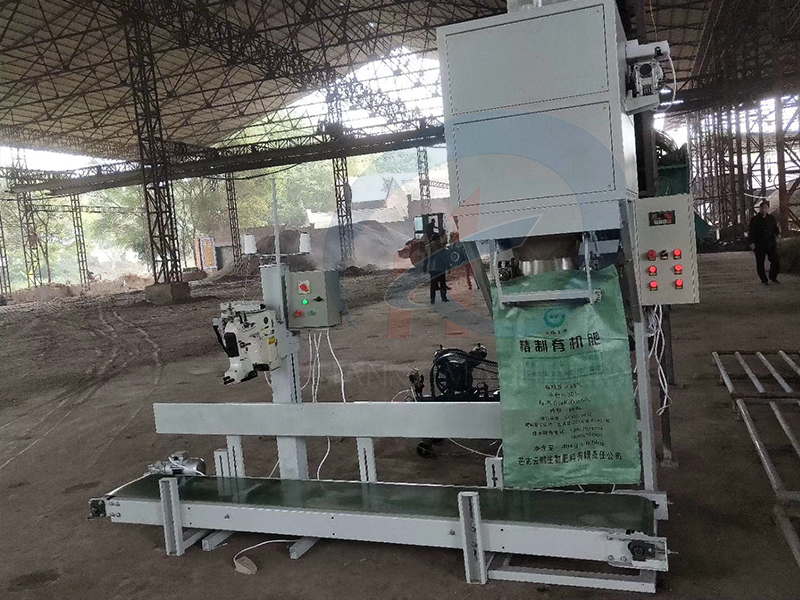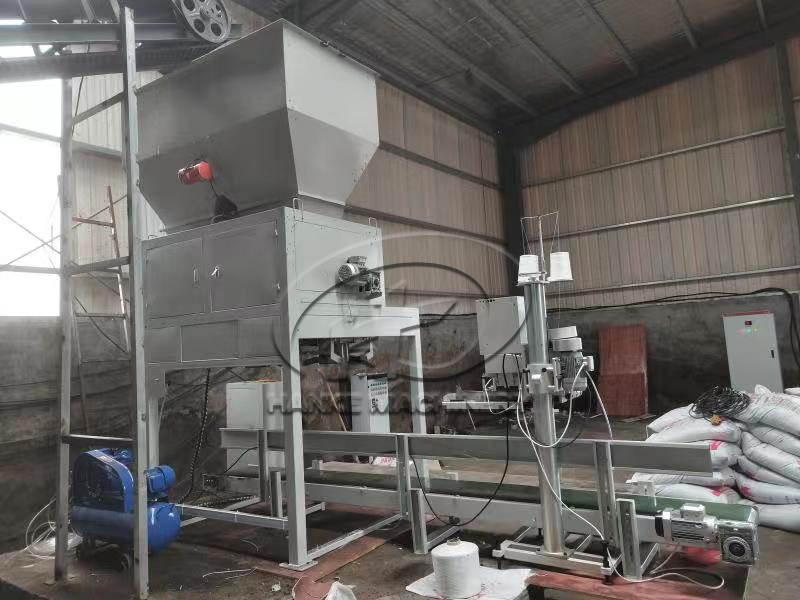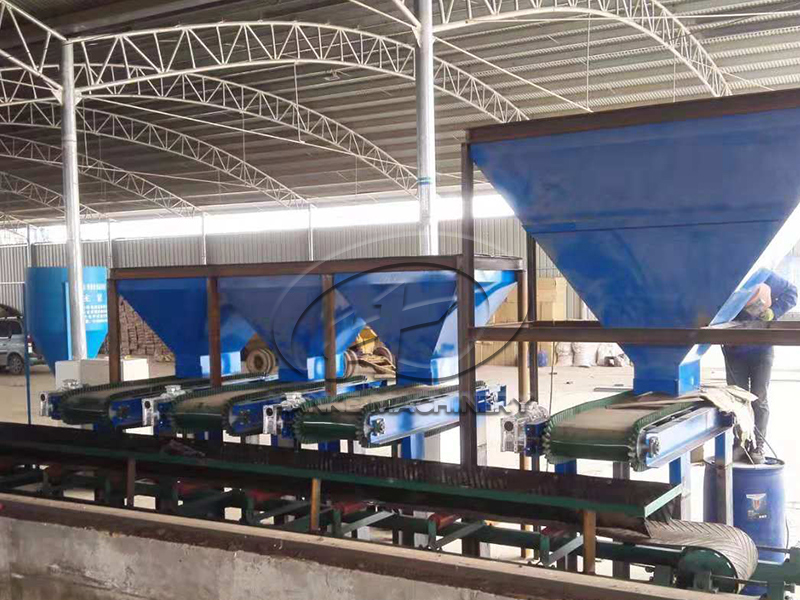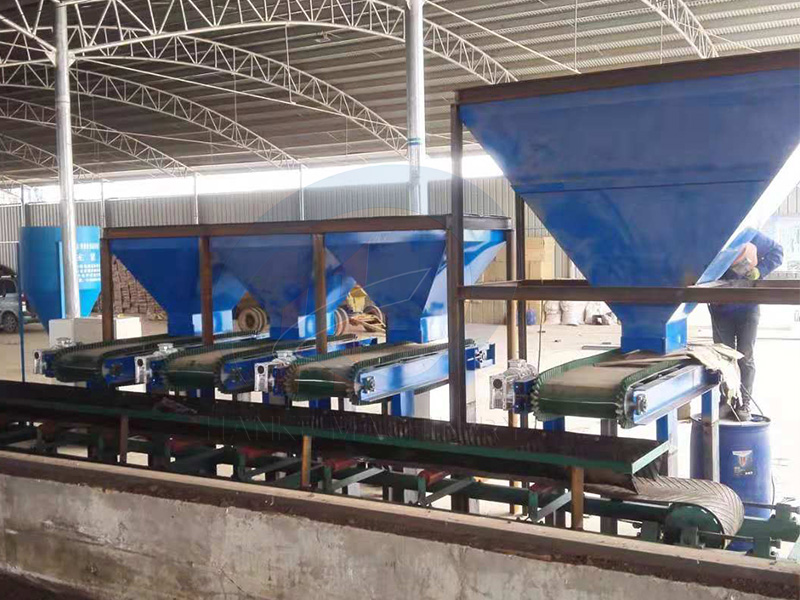 HOME > News > Industry News > How often does the weighing system of the cat litter dynamic batching machine need to be calibrated?
HOME > News > Industry News > How often does the weighing system of the cat litter dynamic batching machine need to be calibrated? Update time : 2025-09-04 Publisher:Zhengzhou Hanke Machinery
The calibration frequency of the dynamic batching machine weighing system should be determined comprehensively based on the usage frequency, material characteristics, accuracy requirements, and industry standards. The core objective is to ensure the stability of measurement accuracy and prevent batching errors caused by drift. The following are specific calibration cycle suggestions and adjustment principles:
I. Basic Calibration Cycle (General Scenario)
Regular calibration: once a month
It is suitable for scenarios of continuous daily operation (8-12 hours) with materials that are not strongly corrosive or extremely viscous (such as ordinary dry powder and granular material batching).
Calibration content: First, perform "zero point calibration" (empty the hopper / conveying system and ensure the instrument displays 0), then use standard weights (accuracy ≥ 0.01%) to conduct "range calibration" (load 50% - 100% of the standard weights of the commonly used feeding range of the equipment, with an error ≤ ±0.1%, specific requirements are subject to the equipment manual).
The reason is that high-frequency operation can cause slight deformation of the weighing sensor and loosening of the connecting parts. Monthly calibration can promptly correct minor drift.
Quarterly in-depth calibration: once every 3 months
Regardless of the frequency of use, it is recommended to conduct a "full-range calibration" once every quarter, covering the minimum to maximum batching range of the equipment (for example, for a range of 10kg to 500kg, standard weights of 10kg, 200kg, and 500kg should be loaded respectively for verification), and at the same time, check:
The protective sealing property of the load cell (preventing dust / moisture from entering and affecting accuracy);
The fit between the speed sensor (if it is a dynamic conveying type batching machine) and the conveyor belt / screw (speed deviation will directly affect the total dynamic batching quantity).

II. Special Scenarios: Calibration cycle needs to be shortened (once every 1-2 weeks)
If any of the following conditions are met, the calibration frequency should be increased to avoid rapid loss of accuracy:
Special material properties:
High-viscosity materials (such as wet cat litter, paste-like materials): They are prone to residue and caking, exerting continuous "additional pressure" on the sensor, leading to zero drift.
Strongly corrosive materials (such as acidic / alkaline powders): May corrode the sensor housing or terminal blocks, affecting the accuracy of signal transmission.
High-temperature materials (>80℃): High temperatures can alter the characteristics of the strain gauge inside the sensor, causing range drift.
High precision is required.
It is used in the food, pharmaceutical and other industries (must comply with GMP and metrology certification standards), with a precision requirement for ingredient measurement of ≤±0.05%, and frequent calibration is needed to ensure compliance.
The equipment is in poor working condition.
If the installation environment has continuous vibration (such as large fans or crushers nearby), or if the dust concentration is extremely high, it can easily cause the sensor connection parts to loosen and signal interference.
III. Scenarios Requiring No Frequent Calibration (Once Every 6 Months)
It is only applicable to scenarios with low-frequency usage (operating less than 10 hours per week), inert dry powder materials (such as quartz sand, ordinary sand and gravel), and a dry and vibration-free environment (such as intermittent small-batch batching).
Note: Even if it is used infrequently, a "zero point calibration" must be performed before each activation. Make sure there is no residual material before starting up to avoid errors caused by dust accumulation during downtime.
IV. Conditions for Forced Calibration (No need to wait for the cycle, calibrate immediately)
If any of the following situations occur, the machine must be stopped immediately for calibration regardless of whether the cycle has ended or not:
The equipment has experienced external force impacts (such as material blockage causing the conveying system to stop, or tool impacts on the weighing frame).
There is a significant deviation in the ingredient results (such as the actual output quantity and the set quantity having an error greater than ±0.5%, and excluding issues such as material blockage and abnormal conveying speed).
The weighing instrument shows abnormal readings (such as zero drift exceeding ±2%, and unstable jumps in values).
After replacing core components such as the weighing sensor, instrument or speed sensor, etc. (a "system calibration" needs to be redone instead of just zero calibration).
Summary
The calibration of the dynamic batching machine weighing system should follow the principle of "regular periodic calibration + special scenario adjustment + immediate calibration upon abnormality", with the core being to ensure the accuracy meets the production requirements through calibration. It is recommended to combine the recommended cycle in the equipment manual (different manufacturers have different sensor accuracies and may have specific requirements), and establish a calibration record ledger to facilitate the tracking of accuracy change trends and early detection of potential problems.

see details +

see details +

see details +

see details +

 Tel:+86 17319777703
Tel:+86 17319777703
 E-mail:hkautomaticpack@foxmail.com
E-mail:hkautomaticpack@foxmail.com
 Address:Xingyang City, Zhengzhou City, Henan Province.
Address:Xingyang City, Zhengzhou City, Henan Province.
Privacy Policy Copyright © Zhengzhou Hanke Machinery Equipment Co., Ltd Co., Ltd.